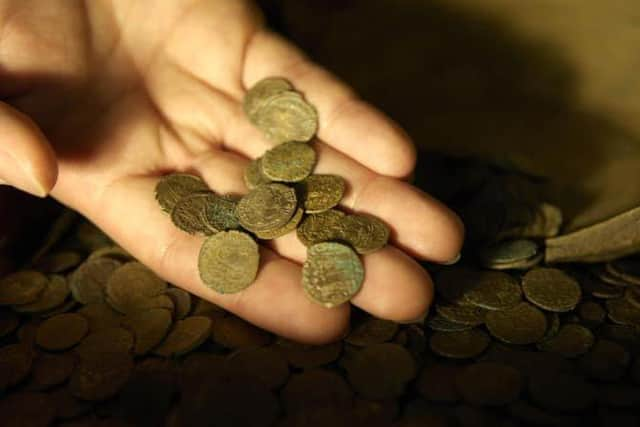Buried treasure troves discovered in West Sussex
and live on Freeview channel 276
Fortune hunters and metal detectorists made nine discoveries in 2020, data from the British Museum and the Department for Digital, Culture, Media and Sport shows.
It means a total of 136 finds have been reported in West Sussex since records began in 2012, the figures show.
Advertisement
Hide AdAdvertisement
Hide AdAcross England, Wales and Northern Ireland, the number of treasure finds topped 1,000 for the seventh year in a row in 2020 – 1,077 were recorded last year.


The British Museum said restrictions on people’s exercise during coronavirus lockdowns contributed to a boost in unexpected garden discoveries last year.
More than 6,000 finds – which could include a single object or a hoard of coins – were recorded with the museum’s Portable Antiquities Scheme during the first lockdown alone, when hunting with a metal detector outside the home was banned.
Former culture minister Caroline Dinenage said it was “brilliant” to see the scheme grow from strength to strength during lockdown thanks to garden finds and digital reporting.
Advertisement
Hide AdAdvertisement
Hide AdAnyone who thinks they have struck a hidden hoard has to tell the coroner within two weeks, so they can hold an inquest to decide whether it constitutes treasure and who will receive the items.
If they don’t, they face an unlimited fine or up to three months behind bars.
Local and national museums are given the chance to purchase any pieces a coroner rules as treasure, but the finder doesn’t leave empty-handed – they will be paid a sum depending on the haul’s value.
In 2020, 247 treasure finds were reported across the South East.
Advertisement
Hide AdAdvertisement
Hide AdThe Treasure Act currently defines treasure as finds older than 300 years and made of gold or silver, or artefacts made of precious metals.
But the Government announced in December 2020 that a new definition would be introduced to protect treasure from being lost to the public. It would see artefacts also defined as treasure if they are “of historical or cultural significance”.
Metal detecting is the best way to unearth lost treasure, according to the figures.
The devices tracked down 96 per cent of finds in 2019, the most recent year with details on how the objects were discovered.
Advertisement
Hide AdAdvertisement
Hide AdA further three per cent – 36 cases – were archaeological finds and 10 from field walking or scouring streams and shores. Police recovered one treasure trove from a “nighthawker” – an illegal treasure hunter.